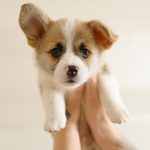Welcome to our Peculiar Pet Facts series, where we venture into the enigmatic world of our beloved pets, uncovering the scientific marvels that make them so uniquely fascinating. Today, let’s explore the captivating world of dog coat patterns and the intricate genetics that define the delightful variety we see at every dog park.
Table of Contents
Decoding the Palette: Two Pigments, Infinite Possibilities
Have you ever marveled at the kaleidoscope of colors at a dog park and wondered how such diversity emerges from the same species?
The secret lies in their DNA, specifically in two primary pigments: eumelanin, responsible for black or brown shades, and phaeomelanin, producing red, yellow, or tan hues. These pigments, both forms of melanin, weave the intricate tapestry of colors in a dog’s coat. Interestingly, a single hair strand can exhibit varying shades due to the different rates at which melanin is produced along its length.
Phaeomelanin exclusively influences hair color, while eumelanin extends its influence to the eyes and nose. Notably, the absence of both pigments results in a white coat, a rarity exemplified by albino dogs, where eumelanin fails to manifest anywhere in their hair.
Beyond Aesthetics: Understanding the Functional Evolution of Dog Coat Patterns
While the beauty of dog coat patterns often captures our attention, these designs have a profound evolutionary significance rooted in functionality. Each pattern, whether it’s a camouflage-like blend or striking patches of color, serves a purpose honed through generations of survival instincts.
Let’s delve into the evolutionary tale behind some common coat patterns:
1. Camouflage Coats: Blending In for Survival
In the wild, the ability to blend into the surroundings is a matter of life and death. Many dog breeds, especially those with natural hunting instincts, have coat patterns resembling the natural environment. These camouflaged coats, seen in breeds like the Australian Shepherd and the Border Collie, allow them to approach prey discreetly. The artful combination of colors and patterns ensures these dogs can stalk their quarry effectively, showcasing the seamless integration of form and function in nature’s design.
2. Bold Markings: Signaling Strength and Hierarchy
Bold patterns, such as those found in Dalmatians and Boxers, serve as visual cues in the wild. These markings often denote strength, vigor, and social hierarchy within a pack. A well-defined pattern can signify dominance, deterring potential rivals and establishing a clear order among pack members. Even in our domesticated companions, these markings are a testament to their wild ancestry, reflecting the ancient language of canines that still echoes through their coat patterns today.
3. Protective Patterns: Nature’s Armor
Nature equips certain breeds with specific coat patterns designed to protect them from environmental elements. Take the Rottweiler, for instance, with its distinct black coat and tan markings. This color combination not only exudes strength but also provides protection against the sun’s harsh rays. Similarly, breeds with darker coats often have thicker fur, acting as a natural insulation layer during colder months. These protective patterns showcase the adaptability of dog coat evolution, ensuring our furry friends are equipped to face diverse climates.
4. Heat Regulation: The Science of Light and Dark
Coat colors play a pivotal role in regulating body temperature. Light-colored coats reflect sunlight, keeping dogs cool in hot climates, while dark coats absorb heat, providing warmth in colder environments. This natural adaptation is visible in breeds like the Siberian Husky, whose light undercoat reflects heat during summer, and the Alaskan Malamute, with its darker coat designed to retain warmth in icy terrains. Understanding these nuances in coat patterns enables us to appreciate the precision of nature’s design, ensuring dogs are equipped to thrive in their respective habitats.
In essence, dog coat patterns are not merely aesthetically pleasing; they are the intricate result of millions of years of evolution. Every stripe, spot, or blend of colors tells a story of survival, adaptation, and the relentless pursuit of balance between form and function. So, the next time you marvel at the elegance of a dog’s coat, remember that beneath the surface lies a saga of evolutionary triumph, beautifully woven into the fabric of their existence.
Genetic Symphony: The Orchestra of Coat Color Loci
Enter the fascinating world of genetic control. Various genes, residing at specific loci in a dog’s DNA, choreograph the dance of eumelanin and pheomelanin, giving rise to diverse coat patterns.
Let’s decipher the genetic code that orchestrates this mesmerizing spectacle:
- A (agouti) locus: Governs an array of coat patterns, showcasing the diversity seen in dogs.
- E (extension) locus: Shapes facial masks, yielding black masks and yellow or red coats.
- K (dominant black) locus: Dictates dominant black, brindle, and fawn colors.
- B (brown) locus: Dictates brown, chocolate, and liver hues.
- D (dilute) locus: Lightens black or brown coats to gray, blue, or pale brown.
- M (merle) locus: Sparks a mutation resulting in merle coats, characterized by irregularly shaped patches of diluted eumelanin and solid color.
- H (harlequin) locus: Linked with white dogs adorned with black patches, often interacting with the merle locus.
- S (spotting) locus: Shapes patterns like piebald, particolored, and extreme white.
Cracking the Code: Understanding Your Dog’s Beautiful Coat
Imagine your dog’s coat as a canvas painted with unique colors and patterns. Have you ever wondered why some dogs have vibrant yellow fur, while others boast a striking black saddle on their back? The secret lies in their genes, specifically in a place called the agouti locus.
Decoding the Agouti Locus
The agouti locus, like a master artist, controls the colors and patterns in your dog’s fur. Thanks to recent research, we’ve unlocked some of its secrets:
- Dominant Yellow: Think of this as the sunny, golden hue found in many dogs. It’s vibrant and full of life, adding a warm glow to your pet’s coat.
- Shaded Yellow: This is a softer version of yellow, adding depth to the fur, much like sunlight casting gentle shadows on a summer day.
- Agouti Pattern: Imagine the natural shades seen in wild animals. The agouti pattern mimics these colors, blending different tones seamlessly, creating a wild and beautiful look.
- Black Saddle: Picture a bold black stripe running down your dog’s back, creating a dramatic contrast. It’s like a stylish belt that adds character to their coat.
- Black Back: This is a simple yet elegant pattern where the back of the dog is mostly black. It’s a classic look that never goes out of style.
Why It Matters for You
Understanding these coat patterns isn’t just fascinating; it helps you appreciate the uniqueness of your furry friend. As a new pet owner, you’ll find joy in the diverse colors and markings your dog exhibits. It’s a reminder that each dog is a masterpiece, carefully crafted by nature’s artistic hand.
So, the next time you marvel at your dog’s coat, you can appreciate the genetic wonders that make them so wonderfully different. Embrace the beauty of your pet’s coat, and remember, every color and pattern tells a special story about your canine companion.
The Future of Canine Aesthetics: Predicting Pup Patterns
In this age of genetic enlightenment, breeders can harness this knowledge to predict the coat colors and patterns of future litters. Genetic tests for ASIP empower breeders to discern gene combinations, aiding them in foreseeing the visual splendor their puppies will embody. As science and passion intertwine, the world of dog coat patterns becomes not just a visual feast but a testament to the marvels of genetic intricacy.
As you observe the playful romps and graceful strides of dogs at the park, remember that beneath their charming exteriors lies a world of genetic wonders. The next time you marvel at the diverse coats adorning our canine friends, you’ll appreciate the intricate ballet of genes that brings forth such stunning variety, turning every stroll into a mesmerizing display of nature’s artistry.






